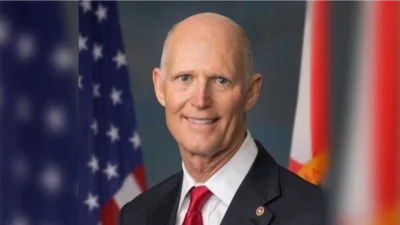Mike Budney began the role of manager of the Savannah River Site (SRS) on March 1 this year. In this Q&A with EM Update, Budney looks back on successes and challenges during his first six months as site manager and talks about EM’s cleanup progress at SRS. He also discusses opportunities to accelerate cleanup and how Savannah River National Laboratory can best support EM.
You have been on the job now for six months. What has been your biggest takeaway from your first months here?
The complexity of the work we do here and the fact that none of our major programs are independent of one another - they all rely, to some degree, on one another for success - makes SRS a challenging, and exciting, place to work. So, as we look at any single program decision or budget in the near term, we have to be careful to ensure we understand the effects on other programs and budgets, in both the near and long term. It's like working those math word problems from school that we all loved, where you have to identify the multiple variables and then sort out a sufficient number of equations to determine the answer. Fortunately, we are blessed with superb personnel throughout the site who know how to do that math to enable us to get things done, and done safely.
What have been your priorities so far and what progress do you see at SRS in getting those met?
Safety is always the first priority, and we are doing well there. Through the first of August, our contractors have amassed millions of operational and construction hours without an injury resulting in a missed day of work. Right after safety comes mission execution and we are working hard on meeting our objectives. This year, for the first time in its history, our nuclear materials program is processing three different streams of spent nuclear material. The liquid waste program has completed a significant maintenance outage and is installing the tank closure cesium removal (TCCR) system, which will remove cesium, a highly radioactive chemical element, from the Cold War legacy salt waste at SRS, accelerating waste removal and tank closure. In parallel, we are in the commissioning phase of bringing the Salt Waste Processing Facility (SWPF) online. SWPF will increase our rate of processing tank waste fivefold or more.
Are there opportunities for accelerating cleanup at Savannah River? If so, how can those be realized?
Our main opportunity is in the liquid waste program, where last year the team identified a plan that could accelerate the program by up to five years, with potential savings of several billion dollars. But the effects then would not be limited to liquid waste because with that program complete we could turn our attention to deactivation and decommissioning (D&D) of facilities much earlier than originally planned.
What do you see as opportunities for near-term wins at the site?
The early completion of the liquid waste program satisfies the state of South Carolina's goal to remove waste from the state as early as possible, while freeing up funds for EM to D&D facilities. There are potential new opportunities to grow the Savannah River National Laboratory's (SRNL) portfolio to advance many national programs and priorities. Finally, with over one-third of the common SRS infrastructure over 45 years old and much of the programmatic infrastructure over 60 years old, numerous opportunities exist to modernize and improve site infrastructure to best meet future DOE needs.
With Savannah River home to EM's corporate lab, Savannah River National Laboratory, what's your vision for how the lab can best support EM?
We need to continue to look at how we are doing business to determine if there are ways to operate more efficiently, but without compromising safety. Folks will often say that while you may want to do things better, cheaper, faster, you are limited to only picking two of those three. SRNL, meanwhile, takes the approach that nothing is impossible, only improbable - unless you put the right folks to work on it. And in fact, they find ways to be more efficient and simultaneously more effective. We need to continue to do that in both the liquid waste and nuclear materials programs.
You had a long and fruitful career as a Navy submarine officer before joining the Department of Energy. How has that background and experience informed how you approach the job of Savannah River manager?
Both in the Navy and here at SRS, we take the same approach to operations. We believe our indications, so we take prompt, correct actions. We strive to understand our systems so that on the rare occasions when the indications are wrong, we can recognize it. We engineer our systems in a thoughtful manner that enables operators to be effective, and that to the maximum extent practicable makes them as safe as possible. We constantly review our infrastructure and correct its deficiencies on a priority basis. So, the translation from Navy operations to SRS isn't really much of transition, except at SRS we don't need Dramamine very often. But I've not ridden in the site's helicopter yet, so the jury is still out on that.
What do you see as the biggest challenge at SRS moving forward?
Budgets are always a challenge - that is true no matter what work you do. I think we've got an energized workforce that wants to accelerate the processes we have in place and develop new ones that advance the mission further and faster. I applaud that because it is exactly what we need, and the more young personnel that join us with fresh ideas, the better off we'll be. That eagerness to improve comes with some risk, however, so we need to be vigilant and clearly understand the potential unintended consequences of making changes to time-tested ways of executing the mission.
Source: U.S. Dept. of Energy, Office of Environmental Management








